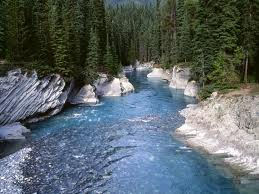 Drainage is the act and consequence of draining : causing something soaked to lose its liquid or draining the final drops of a fluid that remain in a container . The verb to drain comes from the Latin word excurrĕre .
Drainage is the act and consequence of draining : causing something soaked to lose its liquid or draining the final drops of a fluid that remain in a container . The verb to drain comes from the Latin word excurrĕre .
For example: “When it rains so much in such a short time, it is impossible to achieve the drainage of the water that is in the streets” , “To promote drainage, the provincial authorities will build a new canal ” , “The waste blocked the conduit and therefore “That made drainage difficult.”
The water that begins to flow when a channel or reservoir overflows is also called runoff or runoff . The water, in this framework, advances across the surface, which can cause various problems.
The characteristics of runoff, in this sense, are linked to the type of soil , the slope and other factors. This surface runoff is given by the level of precipitation minus infiltration and surface retention.
Runoff begins when both the storage capacity of the surface and the interception power of the flora have been exhausted. From then on, the film of water appears that runs over the surface and erodes the soil, as it flows to the lower levels.
It is important to mention that river runoff is considered part of the hydrological cycle , which covers the entire journey that water takes from the moment it falls from the atmosphere until its return through evaporation. In this cycle, runoff affects circulation. Although runoff is necessary to maintain the flow of lakes and rivers, its excess can be harmful due to erosion .
Going deeper into the details of this phenomenon that is part of the hydrological cycle , we can say that the most decisive parameters in its appearance are the following: the intensity of the precipitation, the infiltration capacity of the area in which it occurs, the characteristics hydraulics and the hydraulic condition of the rock or soil on which it is impacted.
The first of the concepts just mentioned is the intensity of precipitation , which can be defined as the ratio we obtain by dividing the precipitation height per unit of time; This is usually calculated in millimeters per hour ( mm/h ). On the other hand, we have the infiltration capacity , which refers to the maximum speed that the liquid, in this case water, has when it penetrates the surface.
By comparing these parameters, we find information about the processes that can take place depending on the situation. If we talk about the conditions in which the soil is found when precipitation occurs, we can distinguish several possibilities that considerably affect runoff:
 * if the precipitation has an intensity lower than the infiltration capacity level and the soil has an amount of moisture that does not reach its field capacity (that is, it does not meet the capacity it can retain once it is saturated), the runoff It is not excessive, given that the surface has the possibility of absorbing a large part of the water that precipitates on it;
* if the precipitation has an intensity lower than the infiltration capacity level and the soil has an amount of moisture that does not reach its field capacity (that is, it does not meet the capacity it can retain once it is saturated), the runoff It is not excessive, given that the surface has the possibility of absorbing a large part of the water that precipitates on it;
* If the first condition of the previous point is met but the soil usually has an amount of humidity close to or equal to its field capacity, then a percentage of the runoff becomes runoff on the surface, although with volumes of little concern;
* if the precipitation has an intensity greater than the infiltration capacity and the humidity does not reach the field capacity, the soil uses the humidity and drains very little water;
* If the first condition of the previous point is met but the soil moisture equals or exceeds its field capacity , almost all the water from the precipitation will be transformed into runoff on the surface.
